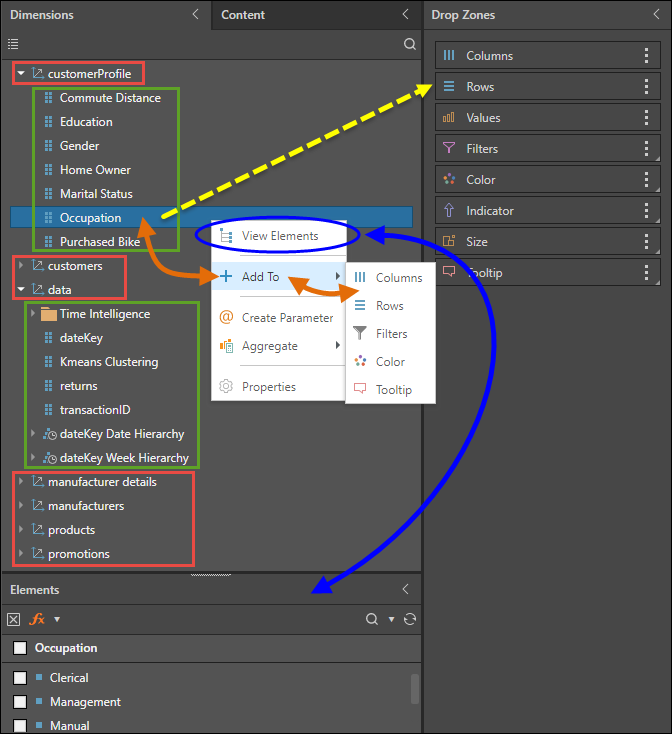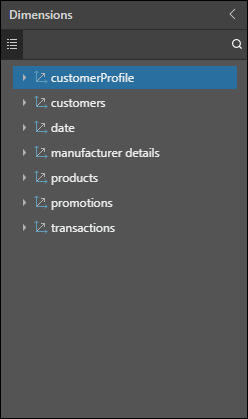Attribute hierarchies are "flat" hierarchies existing in the original data source, and containing member elements; each attribute hierarchy corresponds to a single column imported from the data source. The member elements contained within the attribute hierarchy correspond to the objects within the column imported from the datasource. Attribute hierarchies do not enable drill functions; to leverage drill (up, down or to level), you must use a multi-level hierarchy like regular , parent-child or drill path hierarchies.
Attribute hierarchies are denoted in the Dimensions panel by a six-pack icon:  .
.
Add Attribute Hierarchies to the Query
Hierarchies are exposed by expanding the dimensions in the Dimensions panel. Within each dimension are interactive member hierarchy trees (hierarchies) that allow you to browse hierarchical structures within the data model. Click on a dimension (red highlights below) to show its member hierarchies (green highlights). There are a few ways to add a hierarchy to the query:
- Drag and drop the hierarchy onto the relevant drop zone, (yellow arrow).
- Double click on the hierarchy.
- Right click on the hierarchy and select required drop zone location (orange arrows).
- Right click on the hierarchy and open its Elements Tree to add only specified elements to the query (blue highlights).

Add a Dimension to the Query
You can also drag and drop the dimension itself onto the drop zones:
- If the dimension contains a hierarchy with the same name as the dimension, then that hierarchy will be added to the query.
- If it contains a regular hierarchy and/ or a drill path hierarchyand an attribute hierarchy with the same name as the dimension, then the first regular or drill path hierarchy will be added to the query.
- If no hierarchy has the same name as the dimension, the first regular or drill path hierarchy listed within the given dimension will be added to the query.
- If no hierarchy has the same name as the dimension and there are no regular or drill path hierarchies, then the first attribute hierarchy will be added to the query.
